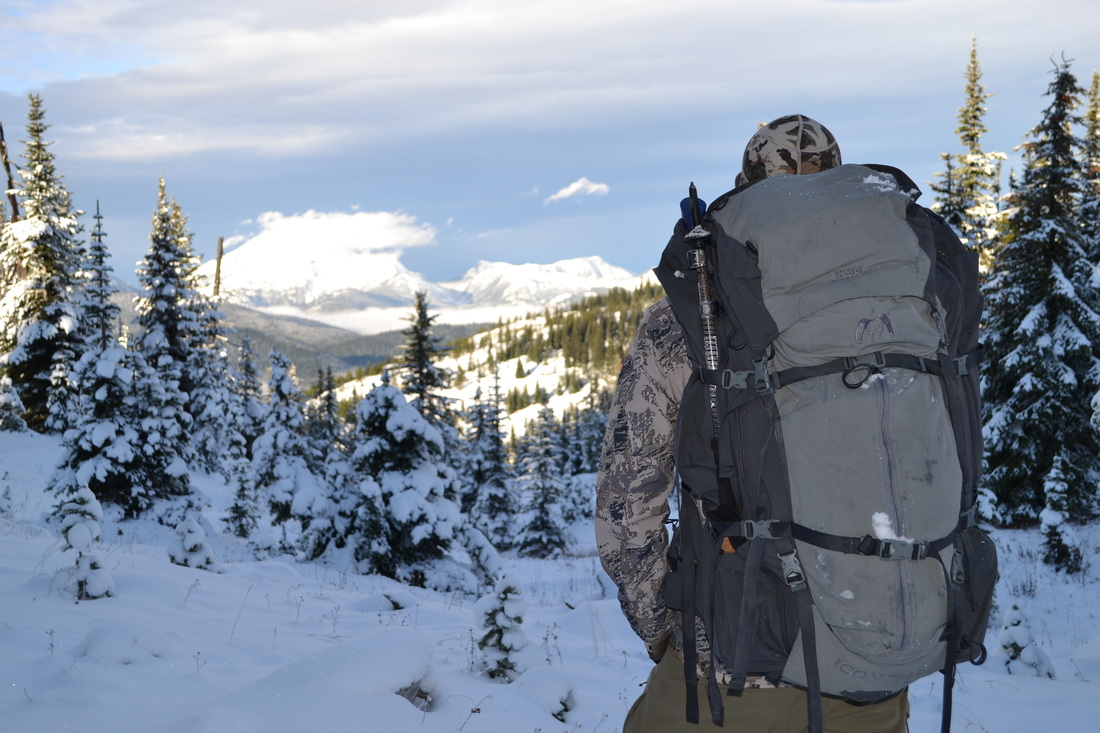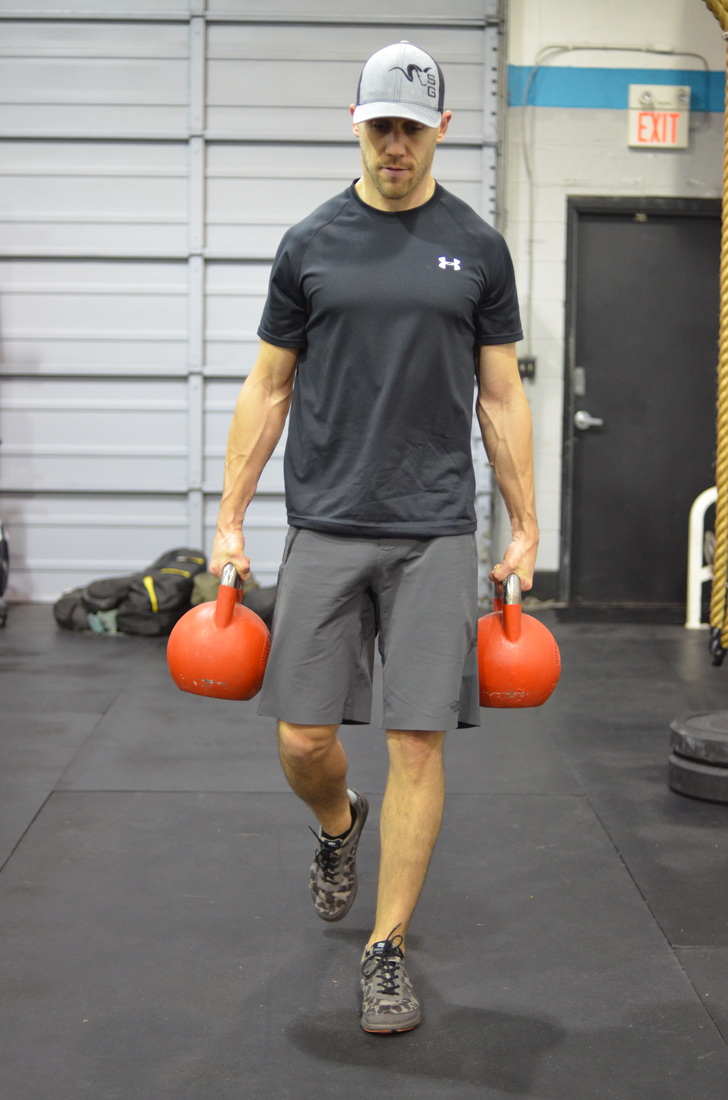In the past two Mountain Fitness articles we’ve covered two incredibly important topics that feed directly into setting your training goals for the season. As outlined in Training with Purpose, it is essential to identify your primary objective for the year. Are you truly training to hunt or are your hunting plans secondary to another, more important physical endeavour like the CrossFit Games, running your first marathon or summiting a mountain this summer? Whatever your core purpose may be, it should drive all training decisions over the remainder of the year.
In The Fountain of Youth, we discussed the importance of taking your past and current injuries and your daily lifestyle and environment into account from the standpoint of how this affects your body and its movement capabilities. This is an integral step to take before diving into any training program. Once your core training purpose has been identified (think of this as WHY you’re training) the movements and exercises your body can actually sustain over time will determine HOW you train. If you want to prevent injuries, maximize strength and endurance and truly optimize the time you spend training and preparing for your hunts, an assessment of your body’s structural and functional movement capabilities is absolutely essential.
Which brings us to the importance of setting realistic and incremental goals, and as we hinted at in Expect the Unexpected last September, there is no proverbial secret sauce when it comes to designing and building a training program. There are no shortcuts or secret HIIT (High Intensity Interval Training) workouts or combination of workouts that will prepare you for the austere, unforgiving and unpredictable environment of the mountains. And given this column is dedicated exclusively to the needs of the hunter athlete our recommendations will be based entirely on setting goals that will pay off in the backcountry not just in the gym.

Training for an overnight or two day trip is simple, and frankly requires little to no preparation for the average hunter with even a little bit of grit running through his or her veins. But training for extended trips (by our definition anything over three days) deep in the backcountry requires a unique blend of strength, power, mobility (what most people think of as flexibility), and endurance. Further, the environment and obstacles you’ll encounter from the trailhead or basecamp to above treeline will vary significantly with the terrain and vegetation changes that come with gains in elevation.
Bushwhacking with a sixty-plus pound pack on your back requires strength, mobility and endurance. Making a summit push above treeline through loose shale, talus and boulder fields requires balance, agility, explosiveness, and high cardiovascular output over a sustained period (what’s known as power-endurance). Quartering, de-boning and packing meat out on your back requires the highest level of whole body strength and endurance most people will ever experience in their lives. In a conventional training program, you would train for one or maybe two of these physical demands for months or even years, tailoring your program to meet the specific needs of those demands.
But as we also outlined in Expect the Unexpected, the mountain hunter can and hopefully will encounter many if not all of these demands on any given day. When we add in the fact that most of these trips are entirely self-supported or at best based off of horseback, preparing to handle the varied demands on a day-to-day basis is no easy task. As former SEAL and StrongFirst CEO Eric Frohardt mentioned in his Blazing Trail interview, multi-day mountain hunts are as close as it gets to a Special Operations mission outside of the military and the world’s elite operators devote their lives to mission preparation.
For the rest of us, we have families, jobs, and lives to live outside of hunt preparation so we must pay strict attention to the quality of our training not merely the quantity of our training.
And this is why realistic and incremental goal setting is crucial to success. This is also why being attentive and adaptive to how your life and body responds to a given exercise, workout or program is also essential. Trying to follow through on a plan that is unrealistic whether that be due to the time or physical demands is an utter and complete waste. The perfect plan that is not implemented is worthless. The imperfect plan that is implemented with consistently will always lead to better results, so whatever program you put in place, do not follow it blindly.
The wolf does not charge mindlessly into the herd, he assesses the situation, formulates a plan, executes his plan and then adapts to the situation based on both internal and external factors.
Plan, execute, react, adapt, repeat.
Each and every one of you will have slightly different objectives for training so it is impossible to lay out a single do-all plan for setting realistic goals. We have however laid out what we feel is the foundational blueprint to follow when sitting down to devise a plan or program to suit the needs of not only this hunting season but every season from this point forward.
Train smart, train hard and be adaptive like the apex predator you are.
GOAL SETTING BLUEPRINT:
1) Define your primary training objective (purpose).
2) Assess your functional capabilities (read The Fountain of Youth if you have not).
3) Assess the environmental demands you will encounter and the physical demands required by these environments.
- True high alpine? Mix of mountains and foothills? Canyon country? River based float trip that requires bushwhacking into the alpine? Horseback based? Backpack based? Will you have a base camp or will you be carrying camp on your back each and every day? The list could go on…
4) Assess the time you have to train on a macro and micro level.
- This means working back from your primary trip (aka objective) date to determine the macro time you have available to train (hopefully numerous months) and then determining how much time you WILL devote to training on a weekly or micro basis (hours per week).
5) Start with a foundation of true strength and endurance (more on this in future articles).
- 15-20 minute “WODS” or other HIIT style workouts do not lay the required foundation to excel in the backcountry. They have a time and place but should not and cannot form the foundation of your training program. All things being equal, backpack based mountain hunts are predominantly an endurance based task with a solid dose of strength, power and higher-intensity output mixed in. Training your endurance system only sacrifices strength and durability over a sustained hunt, training strength only sacrifices endurance. BOTH systems should form the very bedrock of your training program and should never be neglected.
6) Build your program and periodization plan specifically to meet the needs of 1 – 5 above.
- In next month’s article we will go deeper on specificity but suffice to say, this is where the rubber meets the road and includes WHAT specific exercises you should be utilizing and WHEN to implement them in your long-term program. This is also where higher-intensity training methods will come into play, albeit in a limited capacity. The program must meet the needs of your primary objective, and be realistic to implement given the time, resources and equipment you have at your disposal.
Starting next week we will be posting one workout per week until the June Issue goes live. You can find these on the Field Notes blog and on the Journal’s Instagram account: @JOURNAL_MTN_HUNTING.
These are intended to be examples of the type of exercises and workouts that we feel will truly prepare you for mountain hunting BUT only you know whether these are the types of workouts you and your body can handle.
That being said, if you feel you’re capable give these workouts a try and let us know what you think via email or on Instagram!
Adam Janke
Editor in Chief
FMS 1 & 2
Matt Thompson
Field Editor
FMS 1


